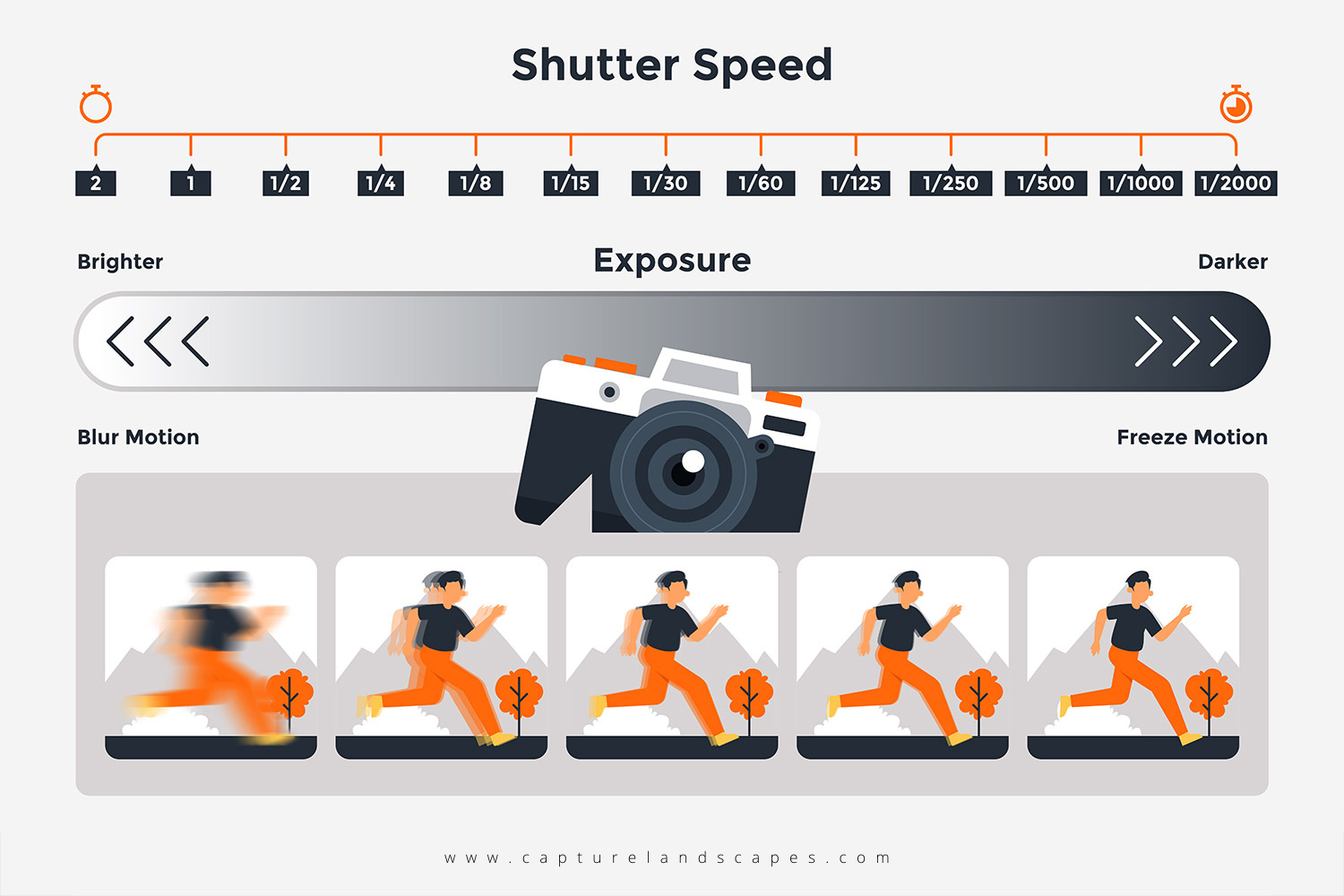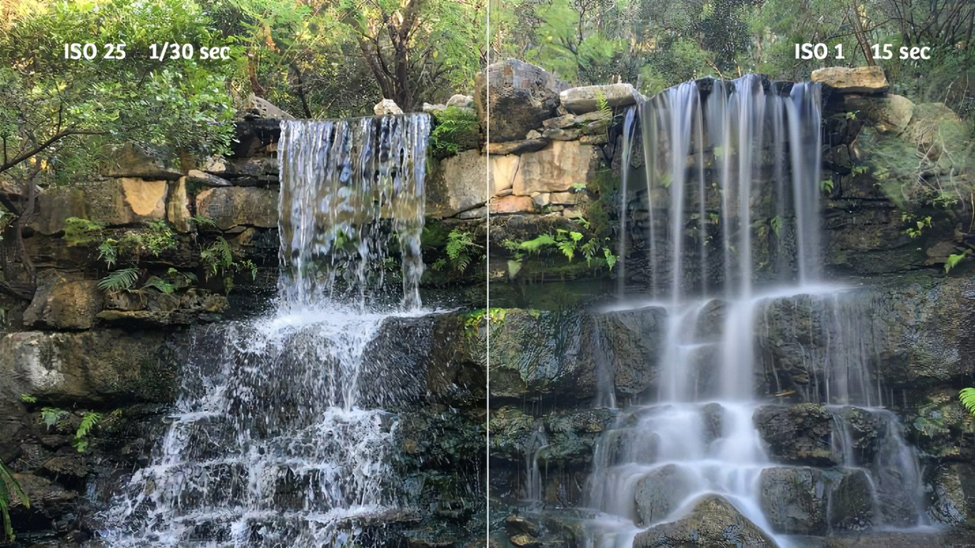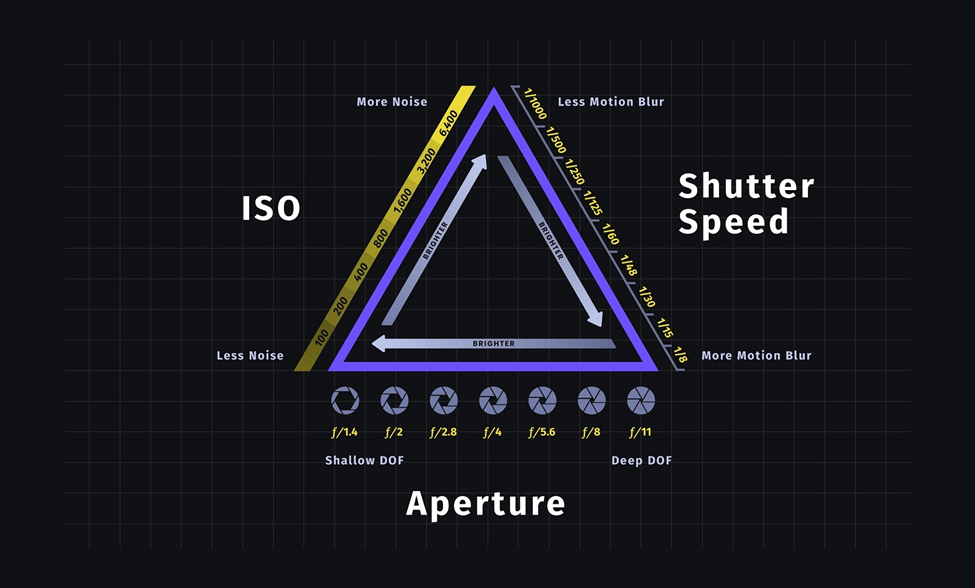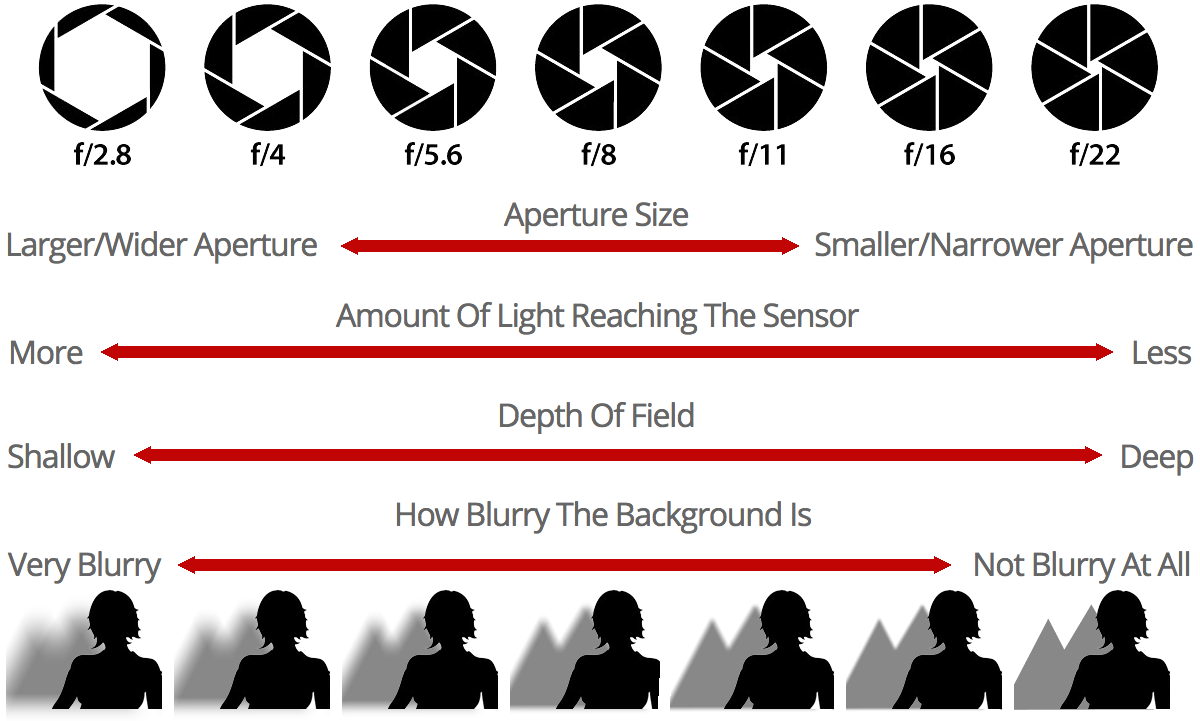The Exposure Triangle
The Exposure Triangle
Photographers and videographers must understand the relationship between three things in order to control the camera and set the exposure intentionally.
- ISO - how sensitive the light sensor will be to light
- f-stop/aperture - how much light is allowed to pass through the lens iris
- Shutter speed - how long the shutter is left open before it closes to cut off incoming light
An adjustment to any one of these settings will impact the final exposure of the image. It is up to the photographer/videographer to set all three in balance, to achieve the desired depth of field, motion blur, and exposure.
ISO
The International Organization for Standardization (ISO... because it is technically not an acronym) established a numerical scale to rate how sensitive different kinds of film were to light. This scale was retained for digital cameras.
When you change the ISO value on a DSLR, you can think of it as swapping out a physical roll of film to a type that is more sensitive or less sensitive to light compared to what is currently in the camera. One big advantage of a digital camera is that you can change the ISO from shot to shot, instead of only per roll of film.
This video shows how to set ISO on the Canon E0S 5D Mk IV.
Higher ISO numbers are more suitable for dark environments but make the image grainier.
Lower ISO numbers are more suitable for bright environments and the image will usually be less grainy.
ISO 100: Suitable for a bright, sunny day
ISO 800: Suitable for indoor spaces when not using a flash
ISO 1600+: Suitable for dim or dark environments (but the picture will probably be grainy looking)
F-Stop
F-Stop is the measure of how much light is allowed to enter the camera to reach the imaging sensor. This is controlled mechanically, by opening or closing the camera aperture. Different lenses have different apertures and so can handle different f-stop ranges.
The Canon EF 24-105mm f/4L IS II USM lens that is usually on the SCiL DSLR cameras has a fixed f/4 aperture through its entire zoom range, but this can be adjusted down to as low as f/22.
Lower f-stop numbers (like f/4) indicate that the aperture is more open, allowing in more light.
Higher f-stop numbers (like f/22) indicate that the aperture is more closed, allowing in less light.
F-stop settings influence the depth of field.
f/1.2 - f/2.8 - lets in a lot of light, with a correspondingly shallow depth of field.
f/4 - f/8 - useful in many scenarios, with a somewhat wider depth of field.
f/11 - f/32 - best for bright settings, with a wide depth of field.
In the chart below, see how different f-stop settings change the amount of light reaching the sensor and the depth of field:
Shutter Speed
The shutter speed, aka exposure time, is the time that the image sensor is exposed to light when capturing an image. The shutter is a mechanical window inside the camera that opens and closes to allow light into the sensor for a selected amount of time.
A fast shutter speed, such as 1/1000 of a second, will allow light into the sensor extremely briefly. This will work in bright lighting conditions but may not allow enough light to impact the sensor in dimmer light.
A slower shutter speed, such as 1/250 of a second, will allow more light into the sensor, and may work better in lower light conditions. However, a lot can happen over longer periods of time, so faster moving subjects or camera movement may result in a blurry look. This could be an intentional, artistic effect, or could simply ruin your shot or take.
Extremely slow shutter speeds (for example ½ second, 1 second, or more) will allow a LOT of light into the sensor and will almost certainly result in blur effects.




